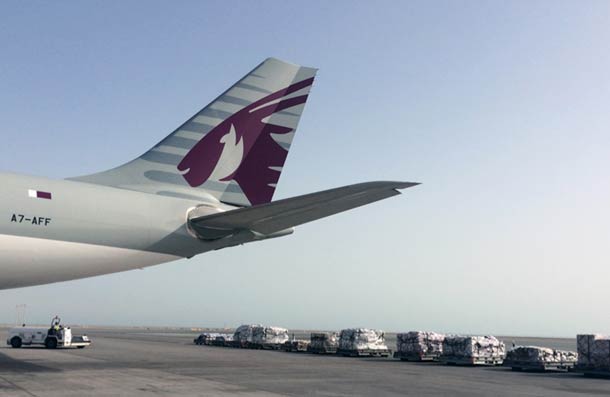
The logistical challenges of disaster relief
Nepal is still recovering from a massive earthquake that struck weeks ago as rescue operations continue and there is a need to explore the logistical challenges and the approach towards disaster relief by various organisations engaged in the logistics sector especially airlines. Lionel Alva Disasters, natural and otherwise can often strike without warning, leaving a calamity […]

Nepal is still recovering from a massive earthquake that struck weeks ago as rescue operations continue and there is a need to explore the logistical challenges and the approach towards disaster relief by various organisations engaged in the logistics sector especially airlines. Lionel Alva
Disasters, natural and otherwise can often strike without warning, leaving a calamity in its wake. The sudden impact of such occurrences places emphasis on the need for effective and efficient disaster response operations. It is here that logistics plays a vital role since, it, perhaps, is the most complex aspect of disaster rescue operations.
Estimates indicate that for every pound that is raised, some 80 pence is spent on logistics; since an immediate response is the essence of disaster management.
Furthermore, one of the key areas that leading practitioners of logistics and supply chain management focus on is agility that is developing processes capable of responding quickly to unpredictable events. Agility must be at the heart of humanitarian logistics, where there is a huge potential for improvement, and consequential benefit to those affected by such activities.
In the event of a disaster, air transport is usually the most viable mode of transportation for immediate response and dire movement of relief supplies. Since, in case of most natural disasters, roads, rail tracks and even ports are rendered unusable for logistics operations. After the massive earthquake, the government of Nepal had sought international intervention for aid in the search and rescue operations. India was the first country to respond to the Nepal disaster.
The government of India launched Operation Maitri, India’s response to the disaster was initiated within 15 minutes of the occurrence of the Nepal earthquake. Relief and rescue teams, including medical teams, to Nepal were dispatched with the help of the Indian Air Force. One of the key organisations involved in international disaster relief operations is Airlink, a 24/7 humanitarian response organisation, that links pre-qualified nonprofits with airlines.
According to a report from Nepal’s Ministry of Health and Population, 26 hospitals were damaged and more than 900 village health facilities outside the Kathmandu Valley are non-functional. Approximately 3.5 million people are reported to be in need of food aid, of which only 731,180 have been reached. Several airlines including Qatar Airways, United Airlines and American Airlines among others have also participated in the rescue operations and aid in Nepal. Qatar Airways Cargo worked in conjunction with local and international charities to provide free transportation of food and water filters to support Nepal’s recovery and to provide aid to areas of the country that have no clean water as a result of the disaster. The aid was distributed by local charity groups throughout the capital.
Akbar Al Baker, chief executive, Qatar Airways Group, said: “Qatar Airways was able to respond rapidly to support the people of Nepal, providing dedicated freighter aircraft to transport much needed relief aid, including medicine, food, water, generators and volunteers, to those in need.”
“Additional Qatar Airways ground staff were deployed on the first aircraft to assist the airport operation and distribution of humanitarian aid and to ensure that Qatar Airways staff working in Kathmandu received support and care,” Baker added.
Apart from Qatar Airways, Deutsche Post DHL (DPDHL) Group, the world´s leading logistics provider, has also deployed their Disaster Response Team (DRT) in Kathmandu. DPDHL Group’s DRT is providing logistics support to help manage the incoming international aid and handle the goods at Tribhuvan Kathmandu International Airport for further distribution by local and international organizations to those in need.
Chris Weeks, Director for Humanitarian Affairs, DPDHL Group, said, “Over the last month we have had around 233 volunteers in Kathmandu over the period. They have been working on the airports and keeping the freight moving away from the ramp, the tarmac area and try to help the airport authorities move the freight into the holding area which is a kilometer and a half away so that it can be loaded on to trucks.

